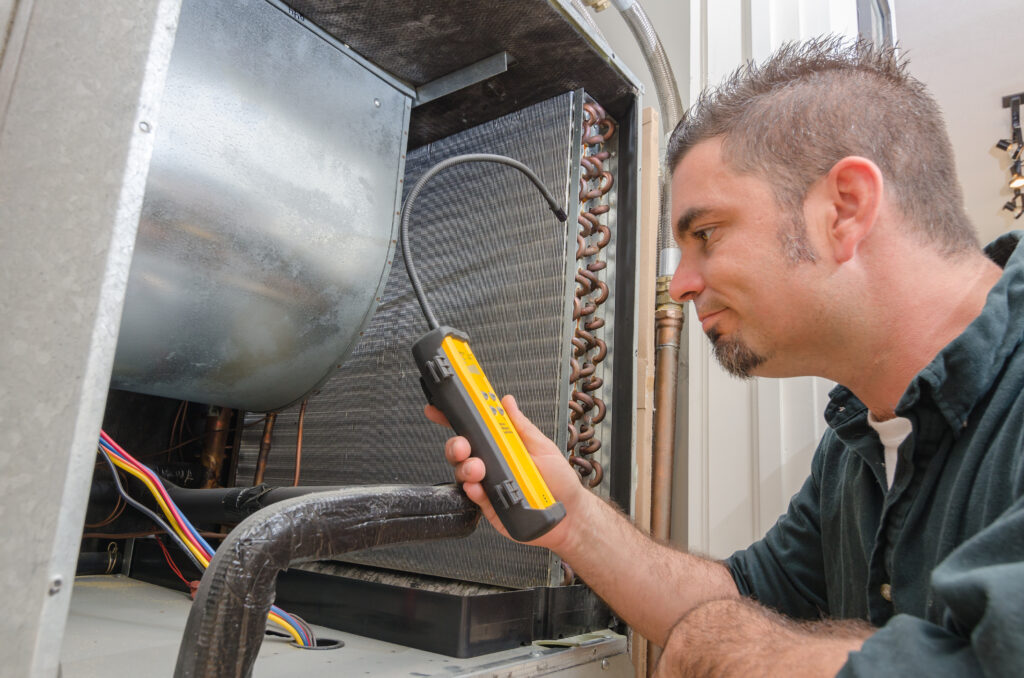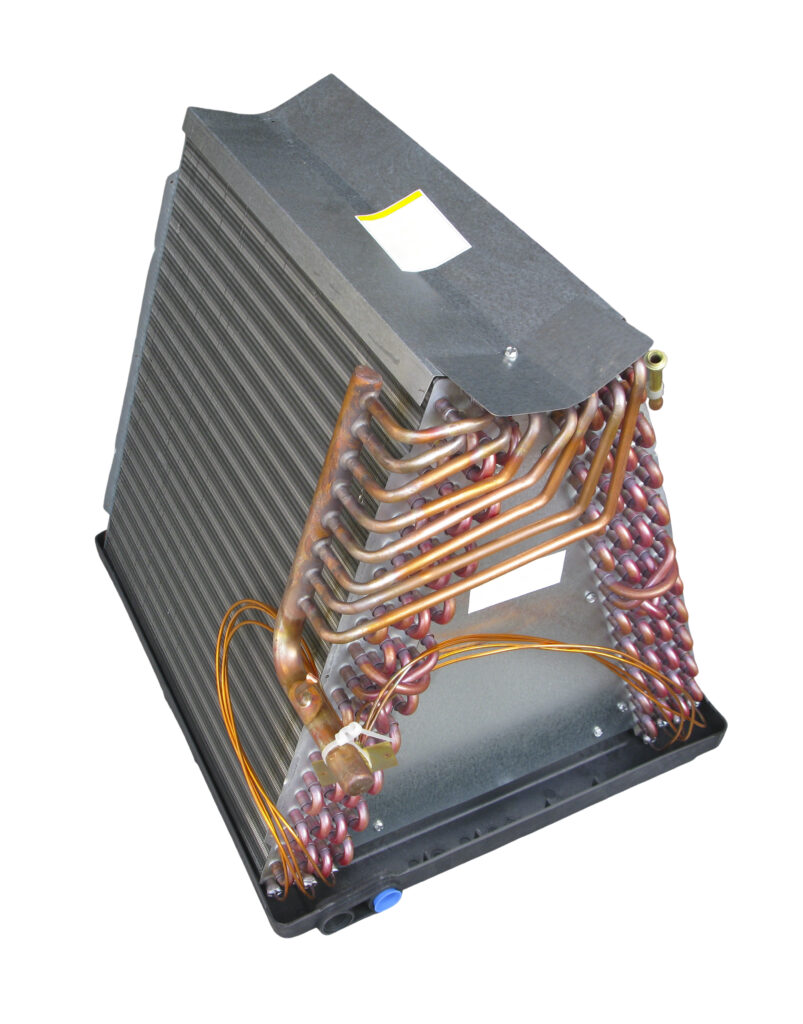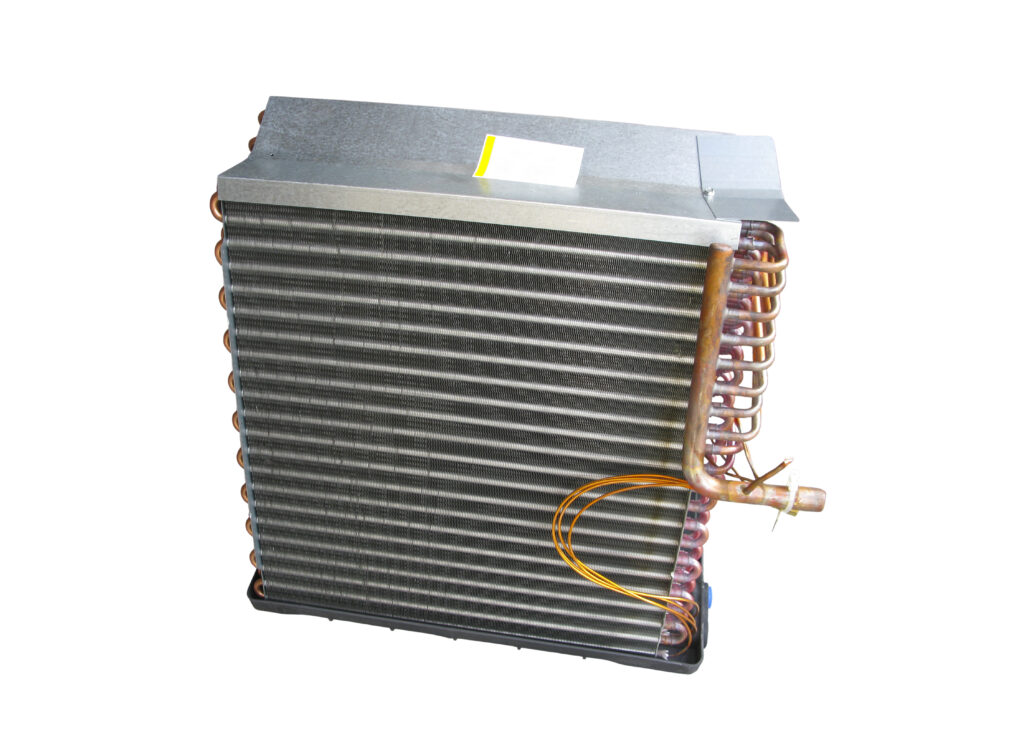Introduction
Have you ever heard of an evaporator coil? Maybe you have but have no idea what it does or that it was even associated with an HVAC system in the first place. Are you now wondering what the heck an evaporator coil is and what it does? Don’t worry, and we can help. In this blog post, we will be talking about what an evaporator coil is and what it does, common problems with evaporator coils, and how to maintain them. We hope this blog post helps you out and answers all your questions about evaporator coils. If it doesn’t, let us know!
What Is an Evaporator Coil?
An evaporator coil is an HVAC part located in the air handler—which is a part inside of the air conditioner—or the very outside of the furnace. It is not only used in HVAC systems, but refrigeration systems too. The name “evaporator coil” was coined for the coil because the refrigerant inside of it reaches a high enough temperature that it boils and then evaporates. Contrary to popular belief, refrigerant boils at low temperatures and that is why both the coil and refrigerant are able to stay cool. Refrigerant also rapidly changes from a liquid to a vapor state inside of the coil. When transporting refrigerant, the refrigerant travels from the bottom of the coil to the top of it.
Evaporator coils are made up of metals such as aluminum, copper, and steel. Copper evaporator coils are considered the best due to their high conductivity when compared to aluminum and steel evaporator coils. An evaporator coil also has fins that add more surface area to it so that the refrigerant has more time to absorb heat.
In order for an evaporator coil to work properly, the coil must be colder than what it is contained in. For an HVAC system, this can be around 40 degrees Fahrenheit or lower. In a refrigeration system, the temperature is wildly different: an evaporator coil in a refrigeration system can reach -20 degrees Fahrenheit.
There are different rules for evaporator coils in HVAC systems. For example, unlike a refrigeration system, an evaporator coil can not reach below freezing or it is at risk for frost buildup. All in all, the temperature of an evaporator coil can range dramatically depending on the system’s needs. While the evaporator coil is only a small part of an HVAC system, it can be complex in its usage.

What Does It Do?
Located inside of the air handler as mentioned above, the evaporator coils’ main purpose is to absorb heat from the air to change the temperature of refrigerant. In doing this, the evaporator coil and refrigerant work together to remove heat from the air, making it cold.
The evaporator coil goes through a complex process in order to do its job. Before it is able to though, a pressure drop has to occur before liquid refrigerant enters the coil. This is so the coil can work at a lower temperature and pressure can be used to manipulate the temperature of the refrigerant.
Once all of that is done, the evaporator coil finally comes into play. First, heat is attracted to the coil as air is flown over it. The coil then pulls in the heat to control the temperature of the refrigerant located inside the coil. During this process, the evaporator coil must be able to control temperature and the flow of refrigerant.
After heat is pulled in, two stages take place to change the refrigerant to the right temperature. The first stage is the boiling phase where the liquid refrigerant is boiled and changes to vapor. The goal is to fully vaporize the refrigerant. When the refrigerant is fully vaporized, the second stage, superheating, can occur. For reference, the superheating stage consists of using temperature and pressure to tell how far the liquid vapor is boiling. An example of telling how far the liquid vapor is to its boiling point would be if it was 55% liquid refrigerant and 45% vapor. The goal would be to reach 0% liquid refrigerant and 100% vapor.
Once there is 0% liquid refrigerant found, the actual superheating can happen. Superheating takes place when the heat is added to the refrigerant above its boiling point. This allows the refrigerant to reach a higher temperature due to the evaporator coil. The heat added to the refrigerant is called sensible heat because of the nature of superheating. The superheated refrigerant, now boiling, goes to the compressor.

Common Problems with Evaporator Coils
When owning an HVAC system, there are several common problems an owner may run into with an evaporator coil. These problems can exist from lack of maintenance, negligence, or extreme weather. With that in mind, however, sometimes HVAC parts just go weary. Listed below are some common problems with evaporator coils that owners may have run into or may in the future:
- Leaking Coils or Low Refrigerant
An evaporator coil may start to leak because of corrosion of the metal or damaged seams. When a coil becomes damaged, it starts leaking refrigerant. Low refrigerant can cause a variety of problems, not just for the coil but the HVAC system as a whole. If someone thinks that their coil is leaking or low on refrigerant, the best thing they can do is call an HVAC technician. The HVAC technician will be able to check the refrigerant level and rule out whether or not the person’s evaporator coil may be leaking. If it is, they may be encouraged to replace their coil by the HVAC technician. If it isn’t then they can rule out that the evaporator coil is leaking. This can save them time and money when trying to troubleshoot.
- Freezing Coils
Evaporator coils can freeze over due to plenty of reasons. The most common one mentioned is low outdoor temperatures, but coils can also freeze over due to low refrigerant as mentioned above, dirty AC filters, and clogged evaporator coils. Usually when an evaporator coil freezes the freezing is a symptom, not the direct cause of why it is not working. When the coils freeze over, the best thing that can be done is have an HVAC technician look at the system.
- Dirty Coils
Dirty coils can occur from a buildup of debris or dust and become clogged. Not only can evaporator coils in an HVAC system become clogged, but other coils such as condenser coils can too. When a coil becomes clogged, airflow is restricted and the coil is unable to work at its full capacity. Just like when an HVAC filter has an excessive buildup of debris and stops working correctly, dirty coils do too. The best way to prevent a buildup of debris in the coils is to have the HVAC system maintained at least once a year.
How to Maintain an Evaporator Coil
There are some easy ways to maintain an evaporator coil. Some basic maintenance can go a long way in keeping an evaporator coil running for a very long time. It may seem overly simple, but it can be the difference between saving money and having to pay a large, unexpected HVAC bill.
- Keep the Outside Unit Clean
An evaporator coil relies heavily on the outside AC unit to be working in proper order. The best way to keep an outside unit from experiencing any unexpected issues is to keep debris away from it. Keeping debris away from the unit can mean clearing away branches, making sure the grass isn’t too high around the unit, or just keeping outside decorations away from it. A good rule of thumb is to keep anything at least three feet away from an AC unit that is not HVAC-related. With the outside unit clean, it can be assured that the outside AC unit has access to proper air flow which will help the evaporator coil run better in the long run.
- Change HVAC Filters
The best thing a person can do to keep any HVAC part up and running is to change their HVAC filters. For an evaporator coil, this is especially crucial. When an HVAC filter is clogged, not enough air moves through the filter. This lowers the pressure of the evaporator coil and stops it from working properly. An evaporator coil requires good airflow in order to continue working. Changing the HVAC filters not only helps to maintain the coil, but the entire HVAC system as a whole. It is generally recommended to change an HVAC filter every three months or sooner based on a person’s household needs.
- Schedule Yearly Maintenance
While keeping an outside AC unit clear of debris and changing the HVAC filters as needed is critical for the function of an HVAC system, scheduling yearly maintenance is a must. Most homeowners are not able to check the level of refrigerant in their HVAC systems by themselves. The level of refrigerant must be at a stable level for the evaporator coil to continue working optimally. Scheduling yearly maintenance with a trusted HVAC company can help a person to not only ensure their evaporator coil is working, but that the rest of their HVAC system is too. Scheduling yearly maintenance is an investment in an evaporator coil that will save a homeowner money in the long run.

Conclusion
An evaporator coil may be only a small part of an HVAC system but it plays a large role. Without it refrigerant wouldn’t be able to change states and be able to be transferred properly through an HVAC system. In this blog post, we covered what an evaporator coil is, what it does, common problems with it, and how to maintain it. If you have any more questions about evaporator coils, leave a comment below. Do you need your evaporator coil looked at and live in Jefferson County or the surrounding areas? Give us a call! Our phone number is 636-475-9384. We look forward to helping you out with all your HVAC needs.